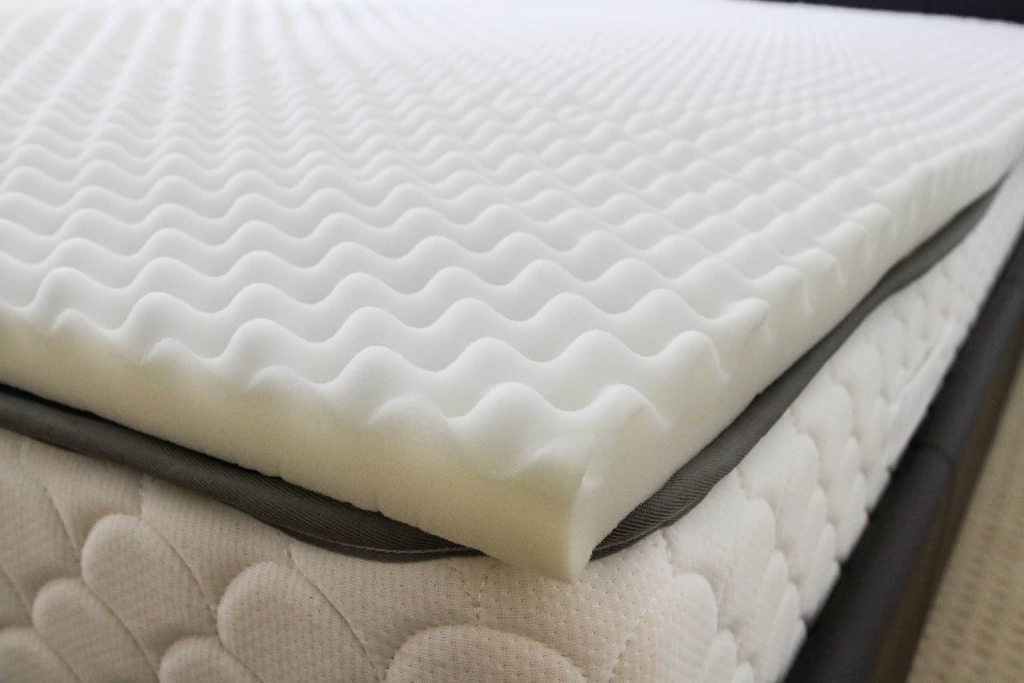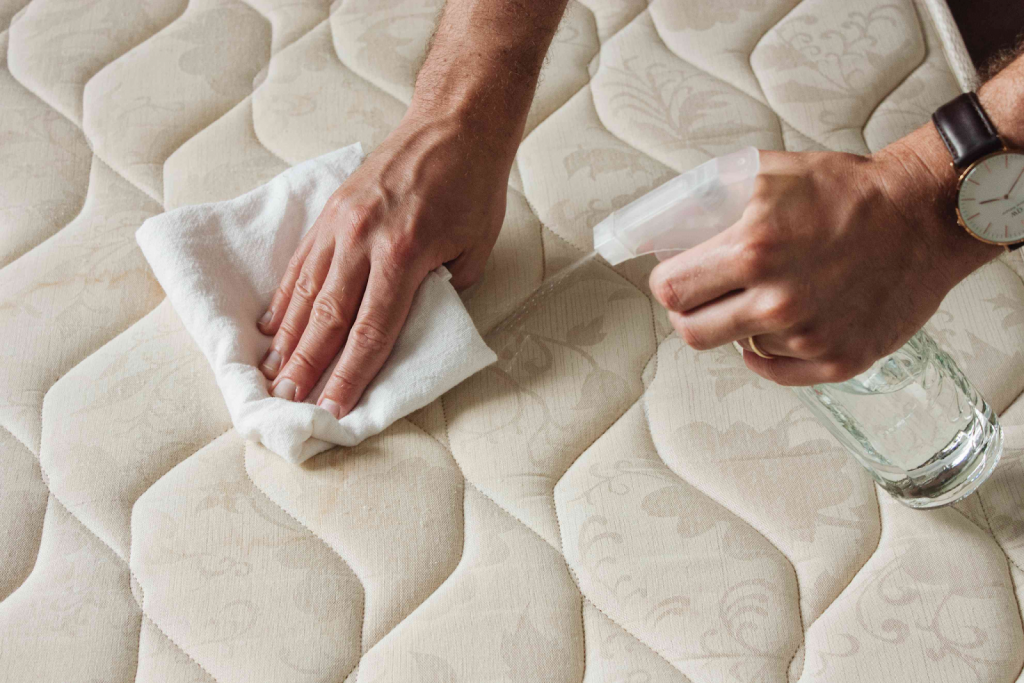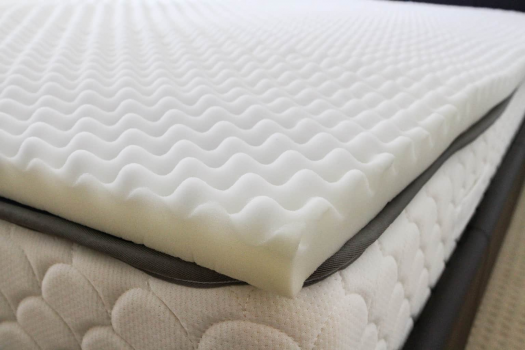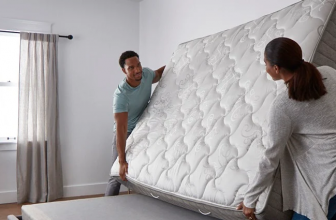Brief: How To Clean A Foam Mattress Pad
- Frequency of Cleaning: Clean a foam mattress pad every two weeks for hygiene. Dust or vacuum weekly if it gets dirty quicker.
- Removal for Cleaning: Remove the pad from the mattress before vacuuming and cleaning.
- Vacuuming: Vacuum the pad to remove dust and dirt, focusing on stains with a damp cloth or sponge.
- Treating Odors and Stains: Use a specialized cleaning solution for strong odors or stains, applying it thoroughly and rinsing with warm water.
- Using Cleaning Solutions: Spray the pad with a vinegar or water solution to remove chemicals and stains, enhancing the smell with lavender oil if desired.
- Rinsing and Drying: Rinse the pad to remove excess moisture and air-dry it on a flat, ventilated surface.
- Stain Removal: For stubborn stains, use a mix of vinegar and water, applying directly and rinsing well after half an hour.
- FAQs:
- General Cleaning: Vacuum, then use mild soap and warm water, air-drying afterwards.
- Mattress Pad Use: Advisable for protection and longevity of the mattress.
- Washing Method: Hand washing is recommended; some pads may be machine-washable on a gentle cycle.
- Replacement Frequency: Replace every 6 to 12 months or immediately if stained or odorous.
- Fabric Softener: Avoid using fabric softener on foam mattress pads.
- Drying Method: Air-dry, avoid using a dryer.
- Impact on Mattress Firmness: Adds comfort but doesn’t change mattress firmness.
Let’s assume you have a foam mattress pad and that you want to know how to clean it. It sounds like quite a hassle, but it will actually only take about thirty minutes of your time. To clean a foam mattress pad you need to vacuum the surface, treat stains and odors, rinse the pad with water, and evenly air-dry it.
This article will give you six easy steps on how to do this task right. And don’t worry, each step is clearly labeled so that there won’t be any confusion.

How Often To Clean A Foam Mattress Pad
Ideally, you should clean your mattress pad once every two weeks to maintain its hygiene. If it gets dirty quicker than that, try dusting or vacuuming it at least once a week. Otherwise, keep on top of the dirt and keep the pad as fresh as possible.
Remember to take off the pad before making or taking a bed – you’ll want to vacuum the mattress at that point too in order to get rid of any dust mites and allergens that are lurking there.
How To Clean A Foam Mattress Pad: 6 Easy Steps
Cleaning a foam mattress pad can be a challenging task. Luckily, here’s a step-by-step guide with clear points about how to make foam mattress pads clean in an easy way.
Remove The Pad From The Mattress
First of all, remove the pad from the mattress. You should do this before vacuuming and cleaning the pad, by unzipping it and pulling it off. Make sure that you remove the whole thing – the edges of the pad should be peeled away from the mattress itself rather than just peeling them up. You don’t want any dirt that’s on your mattress to get transferred onto your pad or vice versa! Once the pad has been removed, then you can begin with cleaning.

Vacuum The Foam Pad
Vacuum away all dust and dirt adhering to the surface. Keep an eye out for any stains and try to remove as much of them as you can using a damp cloth or sponge. You may want to invest in a special vacuum cleaner that uses low-noise technology to minimize noise levels when operating.

This will allow you to clean away all of the dirt without waking anyone in the house up. This also saves time and effort – if it takes too long to vacuum, it will be less likely that you’ll do it as often as is necessary.
Treat Strong Odors And Stains
If there are any strong odors or stains on your pad, you can use a cleaning solution made specifically for this purpose. Mix the cleaning solution with cold water and pour this over the pad’s surface in several different sections.
The stronger smells will dissipate after some time has passed, making sure that you drench the affected area well. It won’t help to just splash the solution onto the pad. Let it sit for ten minutes or so, and then you can rinse it away with warm water.
Spray With A Cleaning Solution
An excellent way to ensure that all cleaning chemicals are gone is to spray your mattress pad with a vinegar or water solution. You can add a couple of drops of lavender essential oil to the water if you’d like to have a relaxing, pleasant smell on your pad. You should spray it until all sides of the pad are evenly doused.

This will eliminate any chemicals or stains left behind by previous cleaning attempts and make the pad smell better. Make sure that you use distilled vinegar – this is much safer than other types because it doesn’t contain sulphuric acid or sodium bisulfite.
Rinse The Pad And Remove Excess Moisture
Rinse away any excess moisture from the pad by pouring cold water over it with a watering can. Don’t just spray with the water, as this won’t get rid of all of the moisture. You’ll be left with a sticky mattress pad, and you’ll have to let it dry somewhere for a few hours. Be sure to dry out the corners of the padding, too – there’s usually a lot of trapped moisture there.
Air-dry The Foam Pad
Your last step is simply to lay out your mattress on an even, flat surface in an area that has plenty of ventilation. It shouldn’t be too hot or too cold for your pad to air-dry quickly. Air-drying will help ensure that no mold or mildew grows on top of your pad when you put it back on your bed later on.
You might consider putting the cover on your mattress to protect it from stains while it’s being aired. This will, of course, have to be cleaned separately.

How To Clean Stains From Foam Mattress Pad
If there are any stains that you just can’t seem to get out of your mattress pad, try mixing one part vinegar with two parts water and pouring this directly onto the stain using a watering can. Let it sit for half an hour or longer, and then rinse well with warm water. This recipe is ideal for getting rid of any old food or drink spills that you don’t want on your mattress pad anymore.
FAQ
How do I clean a foam mattress pad?
Begin by vacuuming the surface of the mattress pad to remove dirt and other debris. For deeper cleaning, you may use a mild soap and warm water solution and then blot any excess liquid with a clean, dry towel. Afterward, allow the mattress pad to air-dry completely before placing it on the bed.
Should I use a mattress pad on a mattress?
Yes, a mattress pad is recommended, as it will add an extra layer of protection against dust, dirt, and other allergens. It can also reduce friction and help prolong the life of the mattress.
Is it better to hand wash or machine wash a foam mattress pad?
It is generally recommended to hand wash the mattress pad. However, some foam mattress pads may be machine-washable. If this is the case, be sure to use a gentle cycle and a mild, non-toxic detergent.
How often should I replace my mattress pad?
For optimal hygiene and comfort, your mattress pad should be replaced every 6 to 12 months. If the mattress pad is stained or has an unpleasant odor, it should be replaced immediately.
Can I use fabric softener when I wash a foam mattress pad?
No, fabric softener should not be used when washing a foam mattress pad. Fabric softeners leave residue on the mattress pad, which may cause irritation or interfere with its breathability.
What is the best way to dry a foam mattress pad?
For best results, allow the mattress pad to air-dry. Avoid using a dryer, as high temperatures may damage the foam of the pad.
Will a mattress pad make my mattress firmer or softer?
A mattress pad can add comfort to a firm mattress but will not make the mattress itself firmer or softer.
Can I use a foam mattress pad on a memory foam mattress?
Yes, a foam mattress pad can be used on a memory foam mattress. However, be sure to purchase a mattress pad that is thick enough to protect the mattress but thin enough to prevent disrupting the contouring properties of the memory foam.
Can foam mattress pads be dried in a clothes dryer?
Generally, it is not recommended to dry foam mattress pads in a dryer. The heat from the dryer can damage the foam of the mattress pad, breaking down the material over time.
What is the best way to ensure good hygiene when using a foam mattress pad?
It is important to keep your foam mattress pad clean to prevent the accumulation of dust, dirt, and allergens. To keep your mattress pad clean, vacuum it regularly and spot-clean using mild soap and warm water if necessary.
What should I do if my foam mattress pad develops an unpleasant odor?
If your mattress pad has an unpleasant odor, you should spot-clean it with mild, non-toxic detergent and warm water. Afterward, hang it in a well-ventilated area to allow it to air-dry completely.
Are foam mattress pads hypoallergenic?
Yes, foam mattress pads are generally hypoallergenic and dust-mite resistant. Additionally, foam mattress pads can help to keep the mattress clean and free of dust and dirt, which can reduce allergy or asthma symptoms.
Does a foam mattress pad make a mattress warmer?
Yes, foam mattress pads can provide insulation which helps to keep the mattress warm. However, a thick mattress pad may also make the mattress too hot. If this is the case, try using a thinner mattress pad.
Do foam mattress pads come in different thicknesses?
Yes, foam mattress pads come in different thickness levels, ranging from ultra-thin to thick and plush. The thickness of the mattress pad should depend on the type of mattress you are using and your personal comfort preferences.
How can I maximize the comfort of my foam mattress pad?
To maximize the comfort of your foam mattress pad, choose one that is the appropriate thickness for your mattress and that is made from high-quality, breathable materials. Additionally, the mattress pad should be replaced every 6 to 12 months for optimal hygiene and comfort.
You may want to revisit some parts of the article








